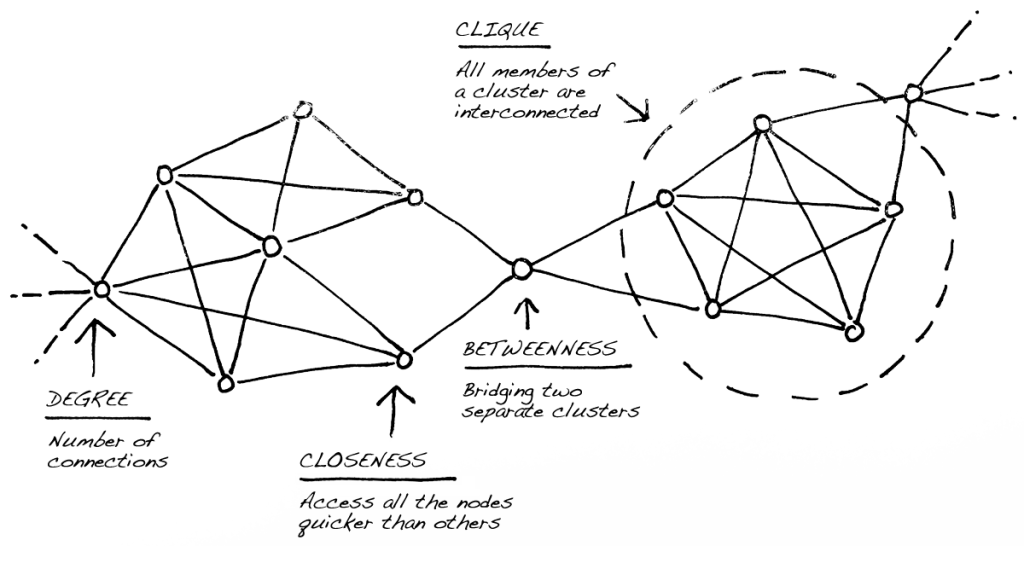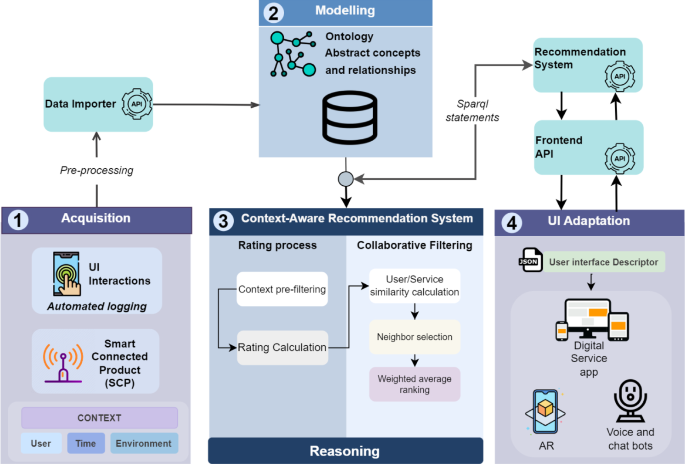Transforming Modal Logic and Speech Acts into Interactive Visual Frameworks
From Propositional Limits to Modal Possibilities
I invite you to explore how we can move beyond the constraints of binary truth values to embrace the rich complexity of modal interactions and speech acts. Together, we'll discover how modern visualization tools can transform abstract logical concepts into powerful, interactive communication frameworks that capture the full spectrum of human expression.
From Propositional Limits to Modal Possibilities
When I first encountered traditional propositional logic, I was struck by its elegant simplicity—yet also frustrated by its limitations. The function of an assertion, as philosophical research demonstrates, is precisely to assign a truth value to a proposition. But what happens when our communication transcends these binary constraints?
The Four Pillars of Human Communication
My research into contemporary communication theory reveals that we communicate for four fundamental reasons, each requiring different modal frameworks:
- Emotional Expression: Sharing our internal states and feelings
- World Observation: Conveying what we perceive and understand
- Future Commitments: Making promises and declarations about upcoming actions
- Requests: Seeking responses and actions from others

What excites me most about modal logic is how it embeds our statements in a larger conceptual space, referring to what might be or might have been. This expansion beyond mere truth and falsehood opens up entirely new possibilities for how we can visualize and interact with complex ideas.
Modal Operators and Their Relationships
This diagram illustrates how different modal operators create interconnected possibility spaces:
flowchart TD
A[Classical Logic
True/False] --> B[Modal Logic
Possibility Space]
B --> C[Necessity
□P]
B --> D[Possibility
◇P]
B --> E[Contingency
◇P ∧ ◇¬P]
C --> F[Knowledge
K_a P]
D --> G[Belief
B_a P]
E --> H[Temporal
F P / G P]
F --> I[Epistemic
Communities]
G --> I
H --> J[Deontic
Obligations]
I --> K[Communication
Contexts]
J --> K
Using PageOn.ai's AI Blocks, I can structure these possibility spaces and logical relationships in ways that make complex modal concepts accessible and interactive. The platform's visual capabilities transform abstract philosophical frameworks into tangible, manipulable representations that enhance understanding and enable new forms of collaborative reasoning.
Speech Acts as Dynamic Communication Architecture
My exploration of speech act theory has revealed that we must move far beyond simple request-response patterns. When I analyze how AI voice interaction systems currently function, I see tremendous opportunities to incorporate the rich, multi-layered nature of human speech acts into our technological frameworks.
Traditional Speech Acts
- Assertives: Stating facts and beliefs
- Directives: Making requests and commands
- Commissives: Making promises and commitments
- Expressives: Conveying emotions and attitudes
- Declarations: Creating new realities through words
Modal Dimensions
- Epistemic: What the speaker knows or believes
- Deontic: Obligations and permissions
- Temporal: Time-dependent relationships
- Alethic: Necessity and possibility
- Axiological: Value judgments and preferences

What I find particularly compelling is how speech acts create different modal realities. When someone makes a promise, they're not just conveying information—they're establishing new obligations and possibilities in the shared communicative space. This performative aspect of language opens up fascinating possibilities for how we design multi-agent conversation protocols that can recognize and respond to these deeper layers of meaning.
Speech Act Performance Matrix
This interactive chart shows how different speech acts create varying levels of modal commitment:
Through PageOn.ai's Vibe Creation capabilities, I can build interactive frameworks that capture this performative nature of language. These visual representations help teams understand how different communication choices create different modal contexts, enabling more sophisticated and nuanced interaction designs that respect the full complexity of human communication.
Visual Representation of Modal Reasoning Systems
Creating effective visual taxonomies for modal operators has become one of my primary focuses. The challenge lies in representing abstract logical relationships in ways that are both mathematically precise and intuitively accessible. I've discovered that understanding the rules of visual communication is essential for making these complex concepts comprehensible.
Modal Operator Taxonomy
Necessity
Must be true in all possible worlds
Possibility
True in at least one possible world
Contingency
Possible but not necessary

Modal Context Transformation Flow
This diagram illustrates how modal contexts shift meaning and interpretation through communicative interactions:
graph LR
A[Initial Context
C₀] --> B{Speech Act
Type}
B -->|Assertive| C[Epistemic Update
K(p) → K'(p)]
B -->|Directive| D[Deontic Change
O(q) → O'(q)]
B -->|Commissive| E[Future Binding
F(r) → F'(r)]
B -->|Expressive| F[Evaluative Shift
V(s) → V'(s)]
C --> G[New Context C₁]
D --> G
E --> G
F --> G
G --> H{Interpretation
Process}
H --> I[Modal Inference
Rules]
H --> J[Pragmatic
Implicatures]
I --> K[Updated Belief
State]
J --> K
K --> L[Response
Generation]
L --> M[Next Context
C₂]
Leveraging PageOn.ai's Deep Search capabilities, I can integrate philosophical examples and logical notation systems seamlessly into these visual frameworks. This integration allows me to create interactive diagrams that not only show the static relationships between modal concepts but also demonstrate how these relationships evolve dynamically through communicative interactions.
The power of these visual representations lies in their ability to make abstract logical concepts tangible and manipulable. When teams can see how modal contexts shift through different types of speech acts, they gain intuitive understanding that enables them to design more sophisticated communication systems that respect the full complexity of human interaction.
Practical Applications in AI and Human-Computer Interaction
When I examine current AI systems, I see tremendous untapped potential for incorporating modal logic principles. Most AI discussion response generators operate on relatively simple pattern-matching algorithms, but imagine the possibilities when we integrate sophisticated understanding of speech acts and modal contexts into these systems.
Current AI Limitations
- • Binary response patterns
- • Limited context awareness
- • Inability to recognize speech act types
- • No modal reasoning capabilities
- • Lack of commitment tracking
Modal-Aware AI Capabilities
- • Context-sensitive responses
- • Speech act recognition and generation
- • Modal commitment tracking
- • Temporal reasoning about obligations
- • Ethical interaction protocols

My work with visual AI ethics frameworks has shown me how crucial it is to build systems that can recognize and respond appropriately to different types of speech acts. When an AI system can distinguish between a request, a commitment, and an expression of uncertainty, it can provide much more appropriate and helpful responses.
Speech Act Recognition Accuracy by Context Type
This radar chart shows how different contextual factors affect AI speech act recognition performance:
Decision Tree Framework for Modal-Aware AI
Using PageOn.ai's Agentic capabilities, I've developed a framework that helps AI systems recognize and respond to different speech act types:
- Input Analysis: Identify linguistic markers and contextual cues
- Speech Act Classification: Categorize the communicative intent
- Modal Context Assessment: Evaluate necessity, possibility, and temporal factors
- Response Generation: Craft contextually appropriate replies
- Commitment Tracking: Update the system's understanding of obligations and expectations
The implications for human-computer interaction are profound. When we build AI systems that understand the modal dimensions of communication, we create opportunities for more natural, nuanced, and ethically responsible interactions that respect the full complexity of human communicative intentions.
Implementation Strategies for Modal-Aware Communication Design
Developing practical implementation strategies for modal-aware communication design requires a systematic approach that bridges theoretical understanding with real-world application. I've found that the most successful implementations begin with clear visual guidelines that help teams understand and apply modal sensitivity principles in their interface design work.
Visual Design Guidelines for Modal Sensitivity
Color Coding Systems
- • Necessity: Deep blues and purples
- • Possibility: Light greens and teals
- • Contingency: Warm oranges and yellows
- • Temporal: Gradient transitions
Interaction Patterns
- • Progressive disclosure for complexity
- • Contextual hints for modal operators
- • Visual feedback for speech act recognition
- • Temporal indicators for time-sensitive content

Communication Effectiveness Assessment Framework
This flowchart shows how to evaluate communication beyond traditional truth-value metrics:
flowchart TD
A[Communication Event] --> B{Identify Speech
Act Type}
B --> C[Assertive]
B --> D[Directive]
B --> E[Commissive]
B --> F[Expressive]
C --> G[Epistemic
Evaluation]
D --> H[Deontic
Assessment]
E --> I[Temporal
Tracking]
F --> J[Evaluative
Analysis]
G --> K[Context
Appropriateness]
H --> K
I --> K
J --> K
K --> L{Effectiveness
Metrics}
L --> M[Modal Accuracy]
L --> N[Contextual Fit]
L --> O[Pragmatic Success]
M --> P[Overall
Assessment]
N --> P
O --> P
Training Material Components
- • Interactive modal logic tutorials
- • Speech act recognition exercises
- • Visual design pattern libraries
- • Case study analysis workshops
- • Assessment rubrics and checklists
Best Practices for Implementation
- • Start with simple modal distinctions
- • Use progressive complexity introduction
- • Provide clear visual feedback
- • Test with diverse user groups
- • Iterate based on usage patterns
Creating assessment tools that evaluate communication effectiveness beyond truth-value metrics has been one of my most rewarding challenges. These tools help teams understand when their communication designs successfully capture and convey modal nuances, leading to more effective and satisfying user interactions.
The establishment of best practices for visual representation of complex logical and linguistic concepts requires ongoing collaboration between designers, developers, and domain experts. Through PageOn.ai's collaborative features, I've been able to create shared frameworks that evolve with our understanding and provide consistent guidance for teams working on modal-aware communication systems.
Transform Your Visual Expressions with PageOn.ai
Ready to move beyond traditional communication frameworks? PageOn.ai's innovative visualization tools can help you create stunning, interactive representations of complex modal logic concepts and speech act frameworks that truly capture the richness of human communication.
Start Creating with PageOn.ai TodayYou Might Also Like
Building Trust in AI-Generated Marketing Content: Transparency, Security & Credibility Strategies
Discover proven strategies for establishing authentic trust in AI-generated marketing content through transparency, behavioral intelligence, and secure data practices.
Google's 9-Hour Prompt Engineering Path to AI Mastery | Complete Visual Guide
Master AI communication through Google's comprehensive 9-hour prompt engineering framework. Learn visual strategies for effective AI interaction and professional success.
Prompt Chaining Techniques That Scale Your Business Intelligence | Advanced AI Strategies
Master prompt chaining techniques to transform complex business intelligence workflows into scalable, automated insights. Learn strategic AI methodologies for data analysis.
Transform Your AI Results by Mastering the Art of Thinking in Prompts | Strategic AI Communication
Master the strategic mindset that transforms AI interactions from fuzzy requests to crystal-clear outputs. Learn professional prompt engineering techniques that save 20+ hours weekly.
